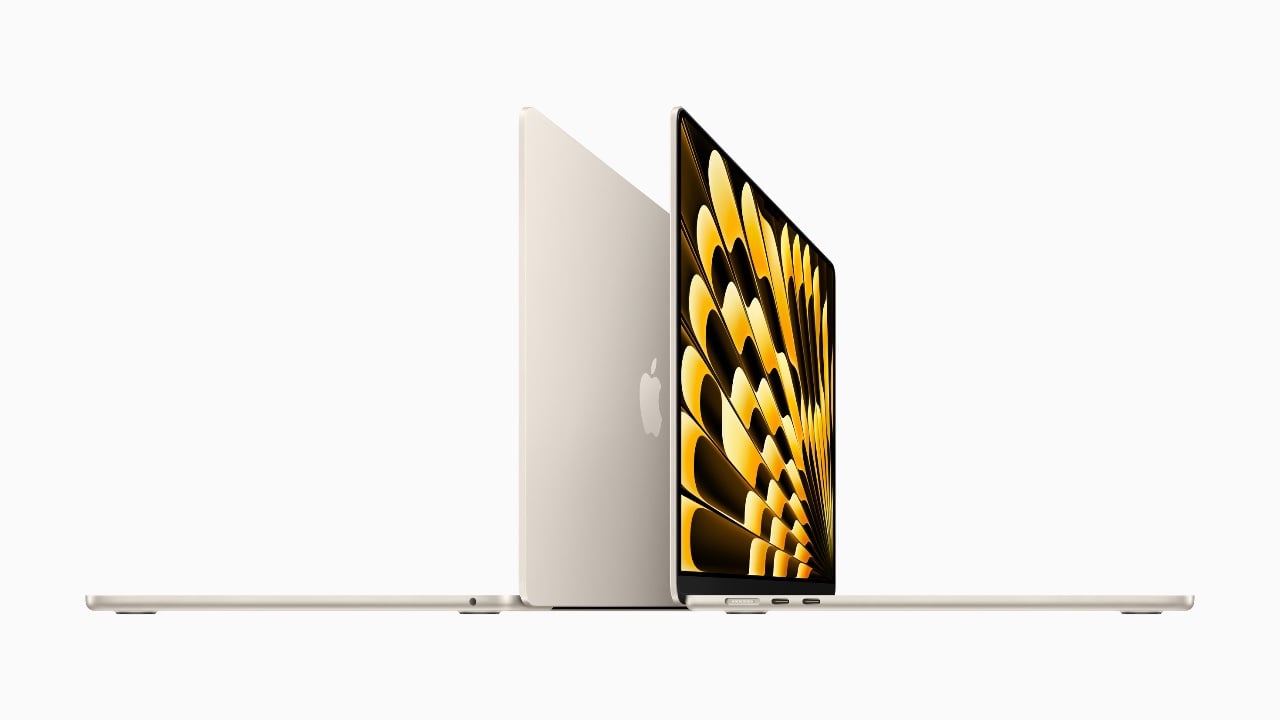
The new Macbook Air does nothing new that isn't measured in inches, but that doesn't stop it being brilliant reckons David Shapton.
First, let me say that this isn't a review. It's more an appreciation of what I think is a significant new laptop.
Laptops are personal devices. Users have an incredibly close relationship with them. It was hard at first: early examples were pitifully underwhelming by today's standards. With two hours of battery life on a good day and woefully low-resolution screens, hard drive access felt slower than an acoustically-coupled modem. They struggled with anything more demanding than a text document. Real-time media processing was out of the question; even spreadsheets could take ages to calculate.
They were thick, heavy, and about as portable as a breeze block. Luckily, three decades into the future, laptops have reached a point where it's hard to see how they could get much better without being so thin they disappear altogether.
For me, the biggest leap forward for laptops was when they started to use solid-state drives. Spinning hard drives always bothered me. They were an accident waiting to happen. SSDs were fast and tough. Around the same time LEDs replaced fluorescent backlights, which always seemed prone to failure. Today's computers are slim, fast, and longer-lasting.
The Air apparent
The latest Macbook, the 15" Air, is essentially a bigger version of its one-year-older sibling, a 13" model, albeit with more loudspeakers and better audio. With the latest power-sipping Apple "M" chip, the M2, it is achingly good-looking, especially in "Midnight" black, my colour choice.
I only occasionally edit video, but it needs to be a decent experience when I do. I also compose music (with Logic Pro and lots of plugins) and edit audio. My main job is writing, and, for that, I need a specific type of laptop.
Most importantly, I need a great keyboard. I touch type, often with my eyes closed. So I need a positive, consistent feel. My previous Macbook, a 13" Intel Macbook Pro with a touch bar, had an objectively terrible keyboard. I only used it when I had no alternative, but that wasn't sustainable: I needed something better. The 15" Macbook Air's keyboard feels very good indeed. I positively enjoy using it. Why didn't I get the 13" model? It's more portable but too small for intensive daily use.
The new computer's screen is 25% larger and has 25% more pixels. So you can fit more text or images on the display. In theory, you could get even smaller text than Apple allows with its fixed sizes, but the operating system renders text superbly, and I wouldn't want to mess with that - especially seeing the hash that Windows machines made when greater than 1920 x 1080 screens first appeared. (I'm not anti-Windows. If you love the Microsoft OS, I'm delighted with that).
There's another reason for choosing this model. Like its smaller sibling, it doesn't have fans. My last Macbook - a late Intel-based version - made a racket like a hovercraft every time I played video. Fans can be a good thing: they can coax more performance from a given processor by preventing overheating. But when I'm writing, fan noise is a distraction. Working with the new machine is incredibly calming in comparison.
I'll take what's in the envelope
For anyone unfamiliar with the modern MacBook lineup, it's worth explaining about the processor.
The first Macbook appeared in 2008. Steve Jobs hid it in a manilla envelope at the press launch: possibly one of the best marketing stunts ever. It was impossibly svelte but unimpressively slow. It booted up on a geological timescale, but you could forgive its glacial performance because it was that thin, that light and because it existed at all.
But it was so ponderous that if future versions were similarly underpowered, it would never be a genre of laptop that would appeal to content creators.
Later iterations became handy general-purpose machines. I bought an 11" one in 2011, and, sporting a solid-state drive, it was the perfect travelling companion. To my amazement, it even powered a 4K monitor when I tried it a few years later. I'm not sure Apple designed it to do that! I still use it sometimes, and it is a fantastic example of how this laptop configuration can last for over a decade.
MacBook Airs became serious computers when Apple switched to their "M" chipsets. These ARM-based systems, notable for sipping power, are remarkably potent. The M1-based Macbook Air was so much faster than its intel-based predecessor that it is still a perfectly modern machine three years later. The M2 chip is about 20% faster, which may not sound much, but, to put it in perspective (you can find all the benchmarks online), it makes the current generation of Macbook Airs competitive with previous Intel-based Macbook Pros.
My new Macbook Air 15" is the fastest laptop I've owned. I have beefed it up with extra RAM and SSD storage - I don't recommend the base version. So it ends up quite expensive for a MacBook Air, but very cheap compared to a MacBook Pro - typically £1000 less.
That's a big deal. And it's a slimmer, lighter machine. The screen is fantastic. The keyboard's great. Six-speaker sound is impossibly good for a laptop this thin. The battery seems to last forever (where "forever" is around 16-18 hours). I have spent very little time on performance testing, but nothing I've thrown at it so far has troubled it. For me, it's the ideal machine. By bringing performance, looks, battery life, silence, a great screen and an impossibly thin profile together, it could be the best laptop ever made.
Tags: Technology


Comments